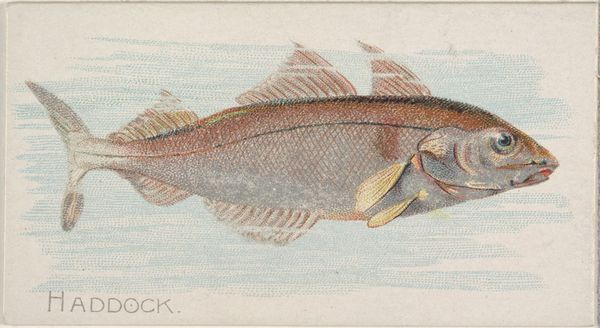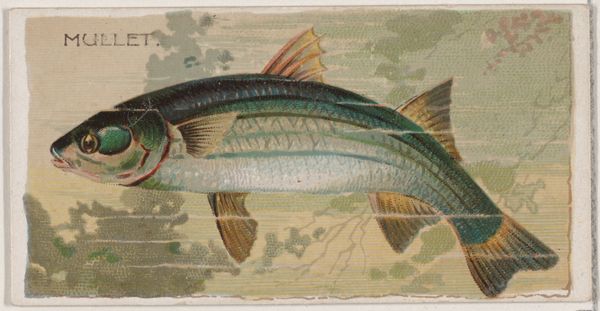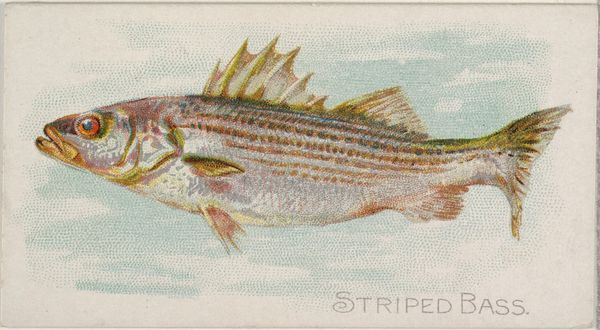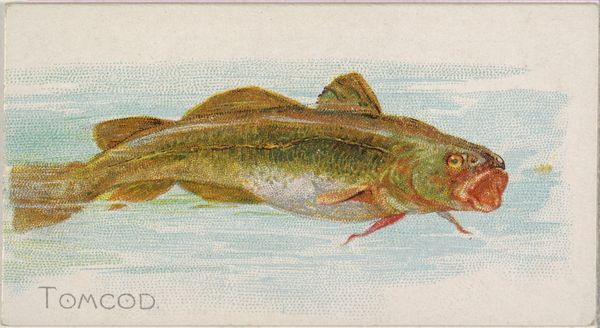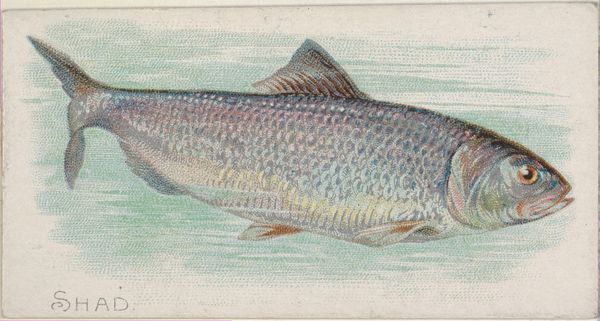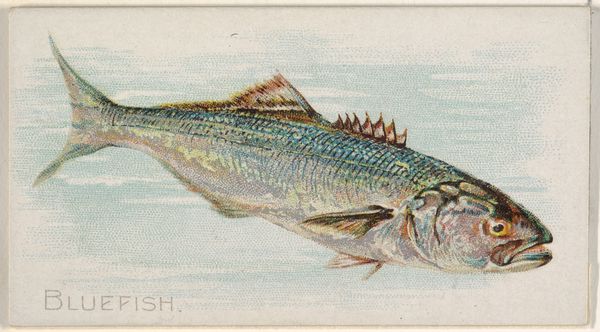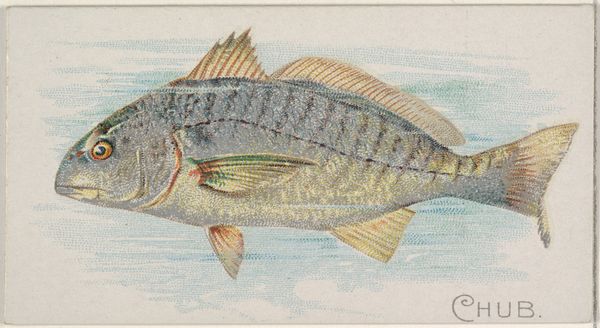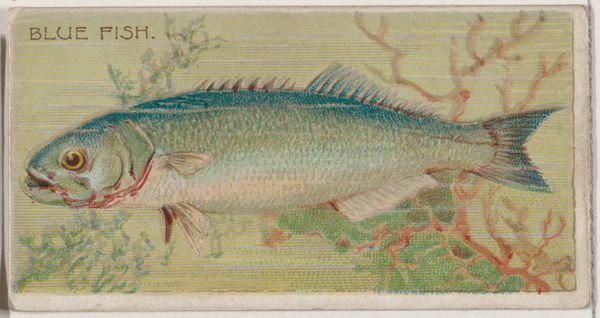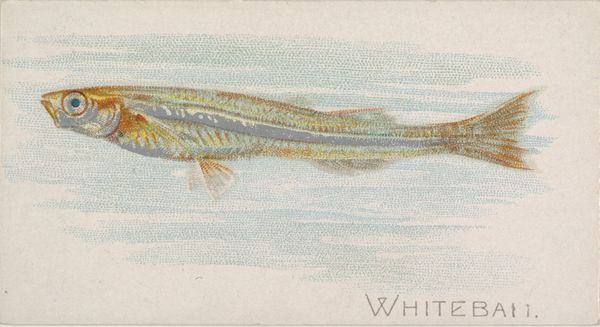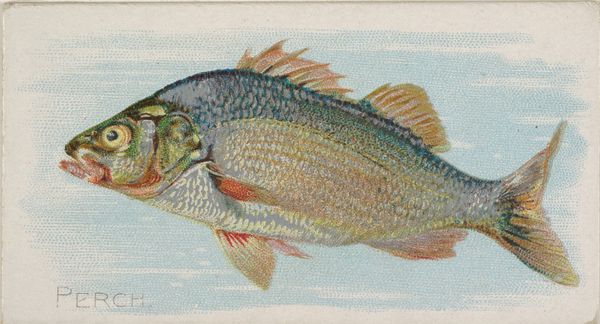
Swordfish, from the Fish from American Waters series (N8) for Allen & Ginter Cigarettes Brands 1889
0:00
0:00
Dimensions: Sheet: 1 1/2 x 2 3/4 in. (3.8 x 7 cm)
Copyright: Public Domain
Curator: This colored print titled "Swordfish, from the Fish from American Waters series" was created around 1889 by Allen & Ginter for their Cigarettes Brands. The work appears to utilize colored pencil and printmaking techniques. Editor: It's deceptively simple, isn't it? The subdued palette and soft focus evoke a feeling of tranquil observation, like a snapshot of a fleeting underwater moment. There's almost something dreamlike in its stillness. Curator: Indeed. If we examine the production context, these cards were essentially trade cards included in cigarette packs, functioning as collectibles and advertisements. They were mass-produced objects intended for widespread consumption, blurring the line between art and commodity. Allen & Ginter leveraged chromolithography, a relatively new printing technology at the time, to produce these vibrant, detailed images. Editor: And how fascinating to think about its accessibility back then. Trade cards became these unexpected educational tools or "infotainment," casually consumed and collected mainly by working-class men. Beyond that, how did such images impact popular perceptions of natural resources? Surely there are narratives around gender roles and consumerism that should be examined. Curator: I agree completely. The mass dissemination of images like these, although appearing benign, played a crucial role in shaping perceptions. This card served to familiarize consumers with American fish, making it exotic but accessible, while normalizing environmental exploitation for consumer benefit. Consider, as well, the labor involved in printing and packaging these cards, not only that of skilled artisans, but also, less visibly, the assembly line workforce, predominantly women and children at the time. Editor: Right. Placing it into our contemporary frame: what happens when we unpack such historical commercial images, and what discussions around consumption and material culture are being generated? Curator: Perhaps we might understand this “snapshot” as a signifier of the entanglement between commodification, labor, and consumer desire inherent in late 19th-century American capitalism. Editor: Precisely! And as it now hangs in a place like the Metropolitan Museum of Art, doesn't it provide us the necessary platform to question existing dynamics, as well as cultural heritage in museum collections? Curator: Food for thought! Editor: Agreed. And a conversation we must keep having.
Comments
No comments
Be the first to comment and join the conversation on the ultimate creative platform.

